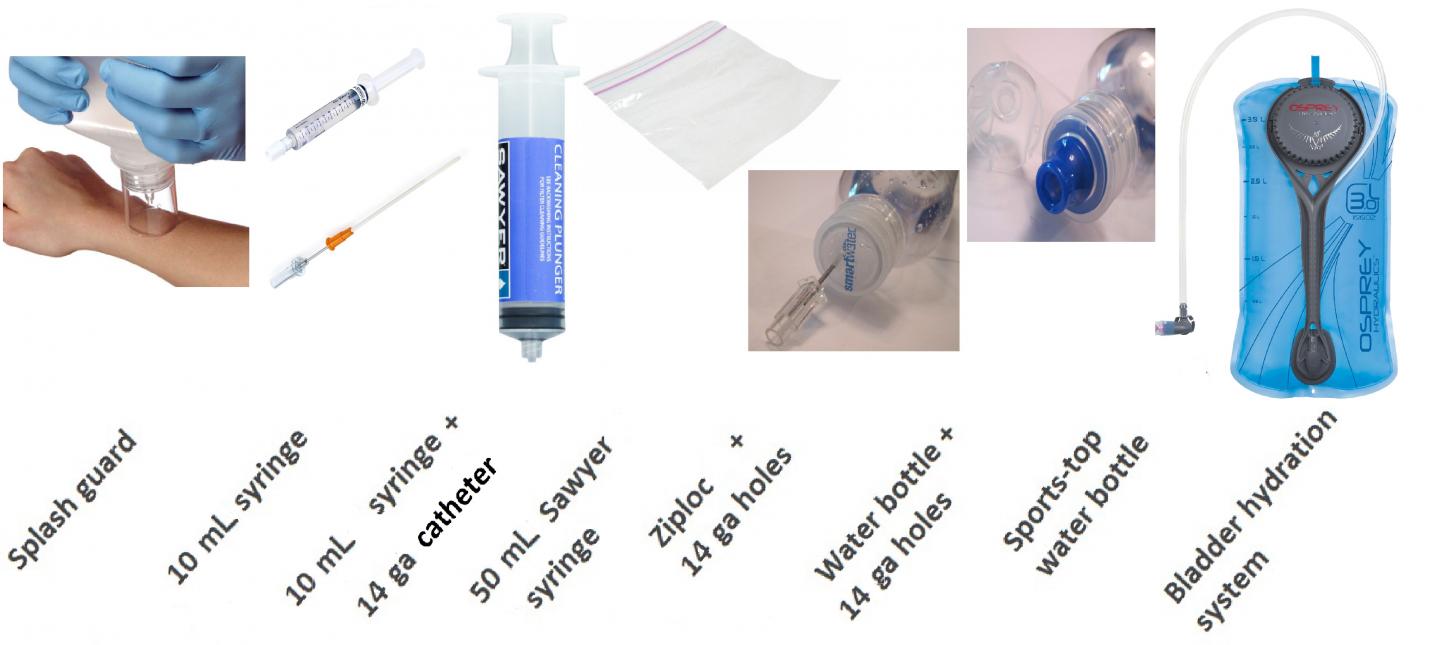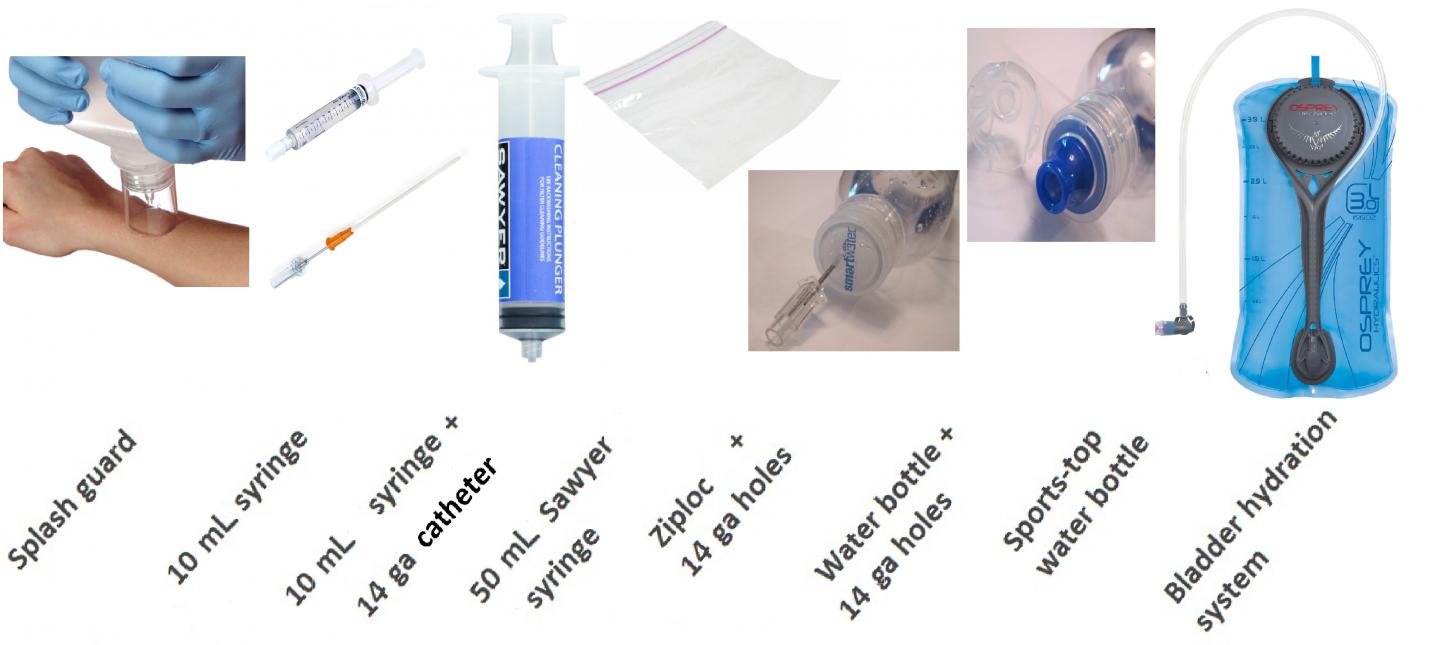
Credit: Susanne J. Spano
Philadelphia, PA, November 28, 2016 – Wounds are a very common injury and irrigation is crucial for preventing infection. Wound irrigation removes bacterial contaminates, in addition to clearing the wound of any debris or dirt. In the wilderness, where proper medical equipment may not be readily available, options for delivering wound irrigation are limited. A team of researchers examined how much water pressure improvised irrigators could produce compared to a commercially available portable irrigator with splash guard. They looked at several different options that might be available outside of a hospital setting and found that most provided sufficient pressure to properly irrigate a wound.
In order to better understand how much pressure these improvised irrigation techniques could produce, investigators from the University of California San Francisco Fresno used a high speed camera to capture images and measurements of the water stream from each irrigator. Using fluid mechanics, the team was able to calculate the resulting pressure output. They resulting pressure readings in pounds per square inch are:
- Commercially available 500-mL compressible plastic bottle with splash guard (4-5 psi)
- 10-mL syringe (48-49 psi)
- 10-mL syringe with a 14-gauge angiocatheter with the needle removed (24-25 psi)
- 50-mL Sawyer cleaning syringe (10-11 psi)
- Plastic bag punctured with a 14-gauge needle (1-2 psi)
- Plastic bottle with the cap punctured by a 14-gauge needle (25-26 psi)
- Plastic bottle with sports top (6-7 psi)
- A bladder-style hydration system (3-4 psi)
"All systems using compressible water bottles and all syringe-based systems provided pressures meeting or exceeding those measured with a commercial wound irrigation device," noted lead investigator Susanne J. Spano, MD, FACEP, FAAEM, Assistant Clinical Professor of Emergency Medicine, University of California San Francisco Fresno School of Medicine, Fresno Medical Education Program. "A 14-ga punctured plastic bag and bladder-style hydration pack failed to generate irrigation pressures similar to the commercial device."
As the team notes in the study, currently there is some debate about the best pressure to use to irrigate a wound. The most recent practice guidelines on basic wound management issued by the Wilderness Medical Society recommends high pressure irrigation (6-15 psi), especially in the case of open fractures. The data revealed that two of the improvised irrigation methods tested in the study did not manage to produce as much pressure as the control device, but emerging research shows no change in complication rates, including infection, when low pressure (1-2 psi) irrigation is used, suggesting that all methods detailed in the study may be viable options when better equipment is not available. "Despite the academic debate on what pressure is best," added Dr. Spano, "it is agreed that the benefits to wound irrigation are time dependent and the sooner the wound can be irrigated, the better."
Each year, over 10 million wounds are treated in emergency rooms around the United States. For those injured in remote areas, however, a trip to the ER is not always possible. With wound irrigation, time is of the essence. All of the improvised techniques presented in this new study seem to be effective methods of irrigation, despite delivering different pressures. While the debate about best practices continues, this new information can help inform treatment decisions made in the field.
"We recommend carrying any of the equipment tested in this article for the use of emergency irrigation, with a preference for devices that would be a normal part of gear supply," concluded Dr. Spano. "In terms of ease of use, the water bottle with the sport top is ideal, being lightweight, already filled with clean water, and taken by most hikers routinely for water storage purposes."
###
Media Contact
Theresa Monturano
[email protected]
215-239-3711
@elseviernews
https://www.elsevier.com/
############
Story Source: Materials provided by Scienmag




